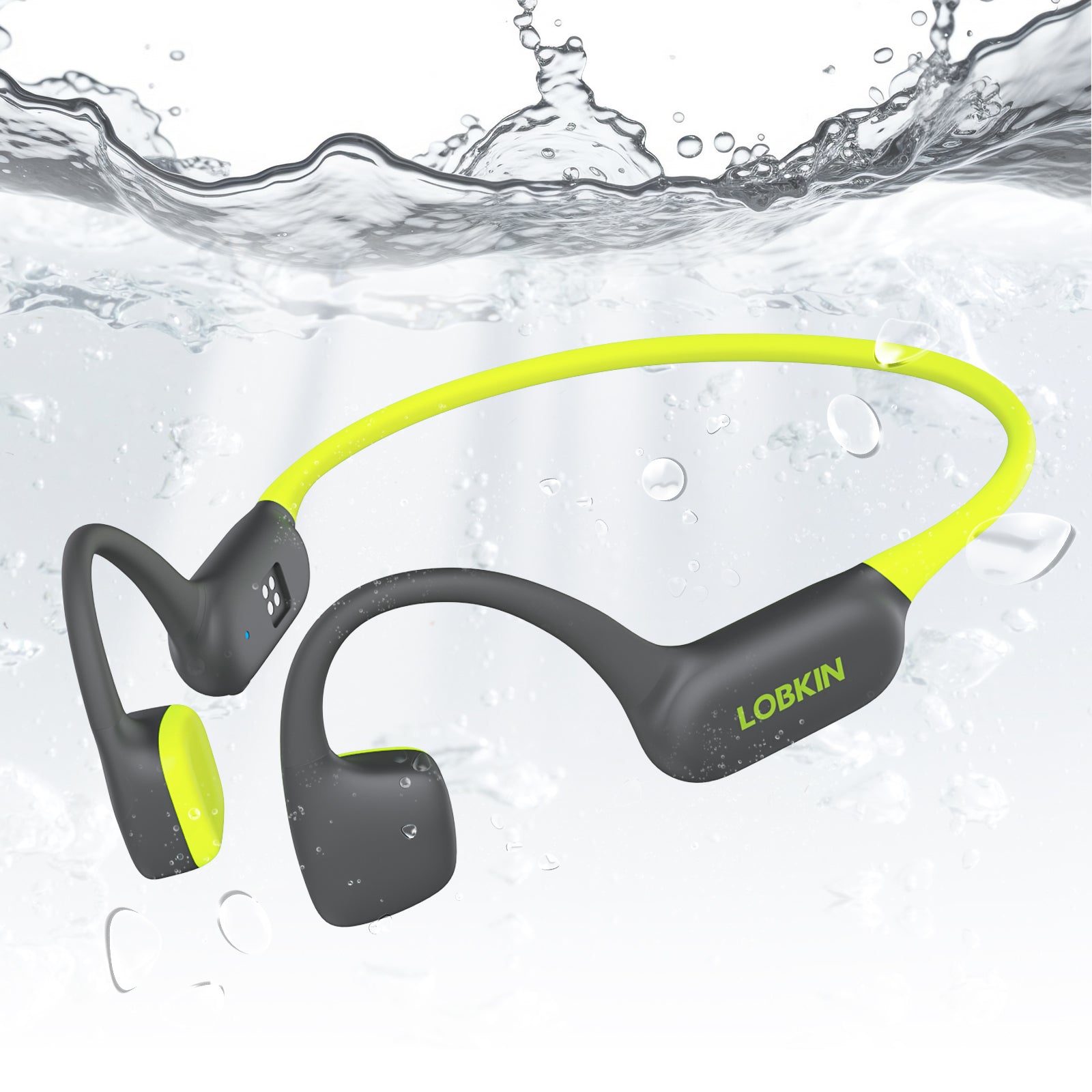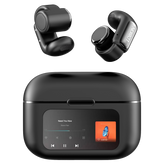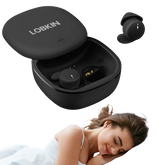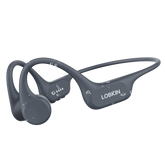Open-Ear vs In-Ear Headphones: Which Type is Right for You?
Introduction
Choosing between open-ear and in-ear headphones can be confusing. Both have their advantages, and the right choice depends on your lifestyle, activities, and personal preferences. This comprehensive guide will help you understand the differences and make an informed decision.
What Are Open-Ear Headphones?
Open-ear headphones (also called bone conduction or open-back headphones) sit outside your ear canal, leaving your ears completely open. They transmit sound through vibrations on your cheekbones or by directing sound into your ear without blocking the canal.
Types of Open-Ear Headphones
- Bone Conduction: Transmit sound through cheekbone vibrations
- Air Conduction Open-Ear: Direct sound into ear without sealing the canal
- Clip-On Open-Ear: Clip onto ear without entering canal
What Are In-Ear Headphones?
In-ear headphones (earbuds) insert directly into your ear canal, creating a seal that blocks external noise and delivers sound directly to your eardrum.
Types of In-Ear Headphones
- Standard Earbuds: Sit in outer ear
- In-Ear Monitors (IEMs): Insert deeper into canal
- True Wireless Earbuds: Completely wireless, no connecting cable
Head-to-Head Comparison
Sound Quality
In-Ear Headphones: ⭐⭐⭐⭐⭐
- Superior bass response
- Better sound isolation
- Clearer audio at lower volumes
- Ideal for music appreciation
Open-Ear Headphones: ⭐⭐⭐⭐
- Natural sound experience
- Good for podcasts and audiobooks
- Improving bass technology (like LOBKIN X25)
- Less fatigue during long listening sessions
Winner: In-ear for pure audio quality, but open-ear is catching up fast.
Comfort
In-Ear Headphones: ⭐⭐⭐
- Can cause ear fatigue after 1-2 hours
- May cause wax buildup
- Pressure sensation in ear canal
- Fit varies greatly between individuals
Open-Ear Headphones: ⭐⭐⭐⭐⭐
- Can wear all day without discomfort
- No ear canal irritation
- No wax buildup issues
- Consistent fit for most users
Winner: Open-ear for all-day comfort.
Safety and Awareness
In-Ear Headphones: ⭐⭐
- Block ambient sounds
- Dangerous for outdoor activities
- Can't hear traffic or warnings
- Isolates you from environment
Open-Ear Headphones: ⭐⭐⭐⭐⭐
- Full situational awareness
- Safe for running and cycling
- Hear traffic and warnings
- Stay connected to environment
Winner: Open-ear for safety, especially outdoors.
Hygiene
In-Ear Headphones: ⭐⭐⭐
- Require regular cleaning
- Can harbor bacteria
- May cause ear infections if not cleaned
- Ear tips need replacement
Open-Ear Headphones: ⭐⭐⭐⭐⭐
- Easier to keep clean
- Less bacteria buildup
- No ear canal contact
- Lower infection risk
Winner: Open-ear for hygiene.
Portability
In-Ear Headphones: ⭐⭐⭐⭐⭐
- Extremely compact
- Fit in pocket
- Lightweight
- Easy to carry anywhere
Open-Ear Headphones: ⭐⭐⭐⭐
- Slightly larger
- Need small case or bag
- Still quite portable
- Lightweight design
Winner: In-ear for ultimate portability.
Battery Life
In-Ear Headphones: ⭐⭐⭐
- Typically 4-8 hours
- Charging case extends to 20-30 hours
- Frequent charging needed
Open-Ear Headphones: ⭐⭐⭐⭐⭐
- Typically 8-12 hours
- Some models offer 20+ hours (LOBKIN X25: 10 hours)
- Less frequent charging
Winner: Open-ear for longer battery life.
Price
In-Ear Headphones: ⭐⭐⭐⭐
- Wide range: $20-$300+
- Many budget options
- Good value at all price points
Open-Ear Headphones: ⭐⭐⭐
- Typically $50-$200
- Fewer budget options
- Premium technology costs more
Winner: In-ear for budget options.
Best Use Cases
Choose Open-Ear Headphones If You:
- ✅ Run, cycle, or exercise outdoors
- ✅ Need to stay aware of your surroundings
- ✅ Wear headphones for extended periods
- ✅ Experience ear discomfort with in-ear models
- ✅ Work in an office and need to hear colleagues
- ✅ Have ear sensitivity or hearing aids
- ✅ Want to avoid ear canal irritation
- ✅ Listen to podcasts and audiobooks primarily
Choose In-Ear Headphones If You:
- ✅ Prioritize sound quality above all
- ✅ Want maximum noise isolation
- ✅ Need ultra-portable design
- ✅ Listen in noisy environments (planes, trains)
- ✅ Are an audiophile or music producer
- ✅ Want the most affordable options
- ✅ Don't mind regular cleaning
- ✅ Use headphones for short periods
LOBKIN's Solutions for Both Preferences
Open-Ear Options
X10 Bone Conduction Headphones
- Perfect for outdoor activities
- IPX5 waterproof
- 8-10 hour battery
- Lightweight and comfortable
X25 Bone Conduction Headphones
- Enhanced bass technology
- Bluetooth 5.4
- 10 hour battery life
- Premium sound quality
In-Ear Options
E10 True Wireless Earbuds
- Superior sound quality
- Active noise cancellation
- 6 hour battery + 24 hour case
- Compact and portable
Can You Have Both?
Absolutely! Many people own both types for different situations:
- Open-ear for: Exercise, commuting, work
- In-ear for: Travel, focused listening, noisy environments
This gives you the best of both worlds!
Making Your Decision
Ask Yourself These Questions:
- Where will I use them most? (Outdoors = open-ear, Indoors = either)
- What's my priority? (Safety = open-ear, Sound quality = in-ear)
- How long will I wear them? (All day = open-ear, Short periods = either)
- What's my budget? (Tight = in-ear, Flexible = either)
- Do I have ear sensitivity? (Yes = open-ear, No = either)
Common Myths Debunked
Myth 1: "Open-ear headphones have terrible sound quality"
Reality: Modern open-ear headphones like LOBKIN's X25 offer excellent sound quality with enhanced bass. While different from in-ear, the quality is impressive.
Myth 2: "In-ear headphones always cause ear infections"
Reality: With proper cleaning and hygiene, in-ear headphones are safe. The key is regular maintenance.
Myth 3: "You can't exercise with in-ear headphones"
Reality: Many people successfully use in-ear headphones for indoor workouts. They're just not ideal for outdoor activities where awareness is crucial.
Myth 4: "Open-ear headphones are only for athletes"
Reality: Open-ear headphones are great for anyone who values comfort, awareness, and all-day wearability - not just athletes.
Conclusion
There's no universal "better" choice between open-ear and in-ear headphones. The right option depends on your specific needs:
- Choose open-ear if you prioritize safety, comfort, and awareness
- Choose in-ear if you prioritize sound quality, noise isolation, and portability
- Consider both if you want options for different situations
At LOBKIN, we offer premium options in both categories because we understand that different activities require different solutions. Whether you choose open-ear or in-ear, we're committed to delivering exceptional audio experiences.
Ready to find your perfect headphones? Explore LOBKIN's complete collection today!







